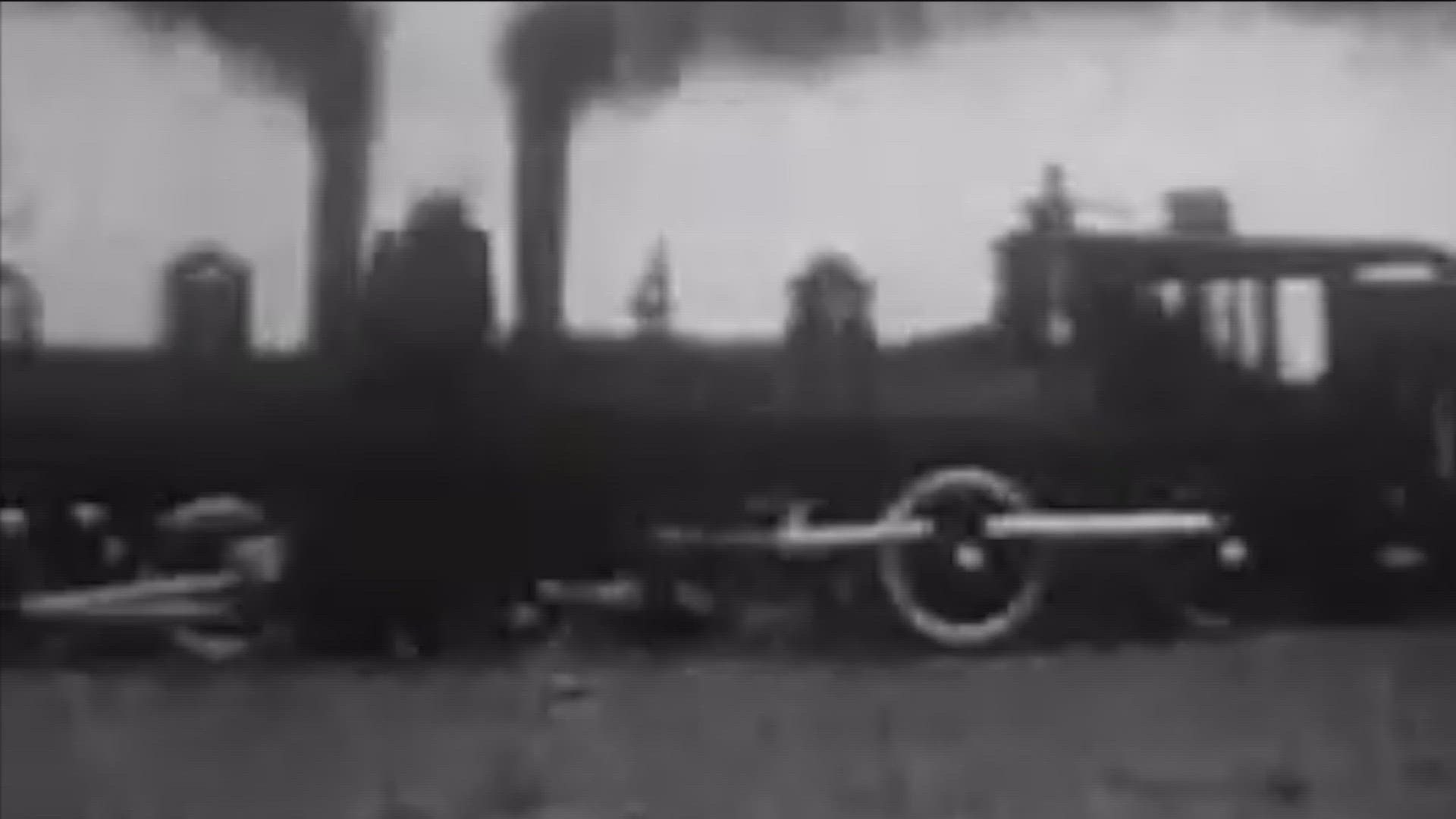AUSTIN, Texas — It was a craze that swept across America around the dawn of the 20th century: spectators watching two steam locomotives crash into each other head-on at high speeds.
And it likely was curiosity that brought thousands of people to Central Texas on a warm September afternoon in 1896. They were there to witness the collision between two high-speed steam locomotives – an event that would prove so infamous that the great American composer Scott Joplin would write a song about it called "The Great Crush Collision."
Crush was named after W. G. Crush, a railroad executive who dreamt up the idea of promoting the new Missouri, Kansas and Texas railroad – known as The Katy – by inviting people to come watch the locomotives collide a few miles outside the town of West, Texas, not far from Waco.
The Katy ran special trains to deliver Texans from across the state for a ticket price of $2. Around 40,000 people showed up for the big event.
The steam locomotives were backed up, aimed at each other, the throttles were opened all the way and the engineers jumped off. The engines approached each other at a combined speed of 100 miles per hour, and it was all over in a matter of seconds.
Then, as people neared the wreckage, the worst happened.
“The boilers on the trains exploded,“ said railroad historian Dave Garland of Wichita Falls. “Two people were killed and six were critically injured. You simply can’t imagine the power steam when boilers explode, and both exploded.”
Crush was fired, but despite the disaster, other promoters began staging similar crashes across the country that lasted into the 1930’s, though none were as disastrous as the one in Texas.
Because of the publicity from “The Crash at Crush,” the Katy railroad became a household name – and it made money. And despite the deaths and injuries, W.G. Crush eventually got his job back and was even handed a promotion.

